What do nonproductive days cost your farm? Can you afford to breed repeats and have 20% lower farrowing rate than your first service females?
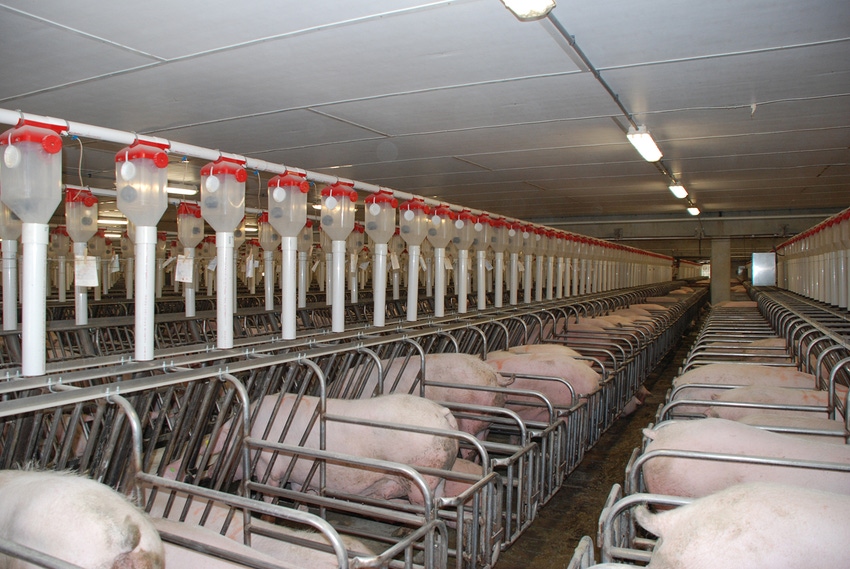
Last month’s article was a deep dive into the impact of the number of matings and this month we are looking at the number of services. The same definitions from last month for the context of the article are:
Number of matings - The number of doses a female receives during a single heat cycle; this could be the result of matings on a 24-hour interval or two matings six-plus hour interval (a.m./p.m.).
Number of services - The number of heat cycles between outcomes. For example, a first service female would be a maiden gilt insemination or the first heat cycle mating of a weaned sow. A second service would be the first repeat mating and three-plus service with female repeating two-plus times.
Cycle - For this article, cycle is defined as the time from the breeding event to weaning; a Cycle 0 female is the breeding of a gilt and the first farrowing results.
Parity - Parity is the term used from farrowing to farrowing; a gilt (Parity 0) becomes a Parity 1 in production software the day she farrows.
Some of the same variations in practices in the breeding barn that were discussed last month add some complexity to this as well. Using the same 38 farms as last month Table 1 shows the variation within them. Farms range from not breeding any repeats or 100% first services to 86.9% first services or 13.1% repeat matings. The farms for this article averaging 5.1% repeats services while the SMS database is at 6.5% on 832 farms. The top 10% of the farms in the database based on pigs weaned/mated female/year are at just 2.4% repeat services. Seven percent of the farms in the SMS database are breeding 1% or less repeat services for the last 52 weeks.

In Chart 2 it shows the 38 farms ranked from the lowest percent of first service matings to the highest compared to the overall farrowing rate. The trendline shows the higher percentage of first service matings the higher the farrowing rate. The overall farrowing rates for the farms from 2016 to present ranged from 77.3% to 95.4% on over 908,000 matings.
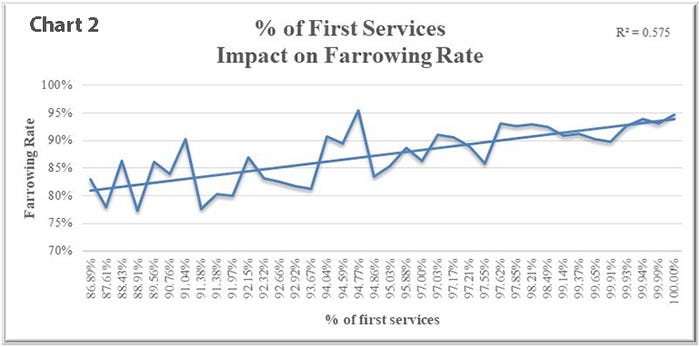
In Chart 3 the correlation on just gilts is even stronger, the higher the percentage of first service gilt matings the higher the farrowing rate for gilts regardless of number of services.
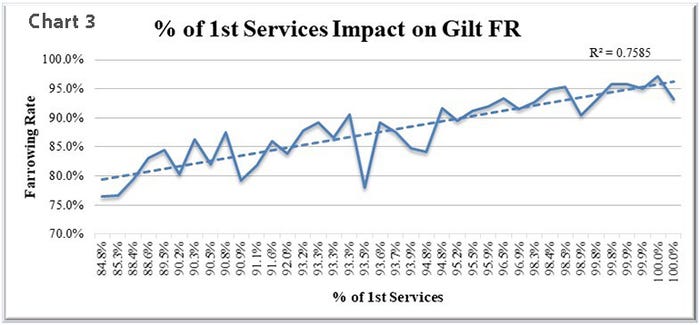
In Chart 4 the impact of number of services by cycle for the early cycle females is shown. With both the first service and second service females the farrowing rate goes down by cycle. Those getting three or more services have more variation. In this dataset, the first service females at 90% farrowing rate, the second service females at 70%, and those with three or more services at just 53%.
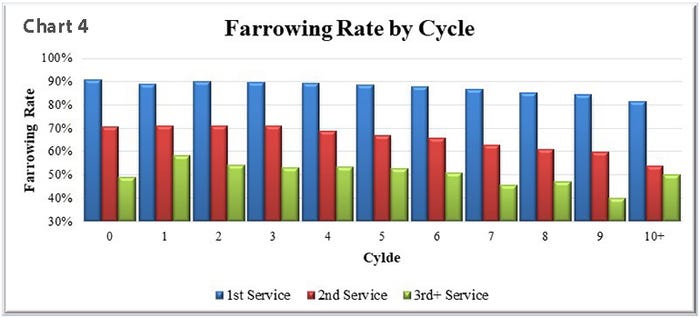
Chart 5 shows total born based on the service number and by cycle. Notice that cycle 1 females have higher total born on secone service than first service, the only cycle that does this, likely due to the first service females being in a nutritional deficit at time of mating and those that didn’t conceive have been given additional time to recover.

Chart 6 looks at when, based on day of the week, the first and second services are occurring as a percentage of total services. The first services range from 6% on Thursday to 20.4% on Monday, while second services have very little variation from .5% to .7%. Third services are fairly consistent as well at .02% to .03% each day of the week; they aren’t just happening on the weekends like many think.
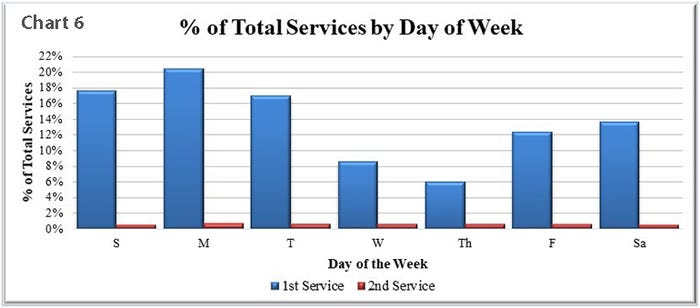
Who is actually being rebred? Chart 7 shows that in this dataset gilts made up 24.7% of the total services with 1.14% of them being second services and .06% being three or more services. Cycle 1 females made up 19.7% of the total matings but 1% of those are second services. Cycle 2 females drop to .7% for second services.

In Chart 8 a little different way to look who is being rebred, of all the Cycle 0 services, 4.6% of them were second services. Cycle 1 females actually higher at 5.1% of the services being a second service. Even out to Cycle 8 females there are at least 2.5% of the services for each cycle that are second services. Looking back at Chart 4 where it shows that the success of second services goes down with each parity, should farms allow second services on older females?
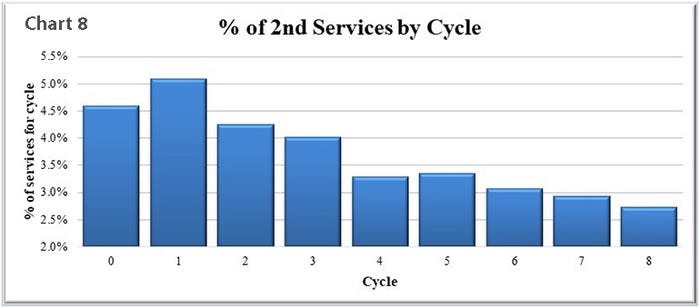
A few key takeaways from this article are:
The success of repeat services is highly variable both within farms and across the farms that we looked at for this article. The greatest way to reduce variation is to limit the number causing variation.
In order to get better results on repeat services, you can’t keep doing what you have always done.
What do nonproductive days cost your farm? Can you afford to breed repeats and have 20% lower farrowing rate than your first service females?
Table 2 provides the 52-week rolling averages for 11 production numbers represented in the SMS Production Index. The numbers are separated by 90-100%, the 70-90%, the 50-70%, the 30-50% and the 0-30% groups. We also included the 13-week, 26-week and 12-quarter averages. These numbers represent what we feel are the key production numbers to look at to evaluate the farm’s performance.
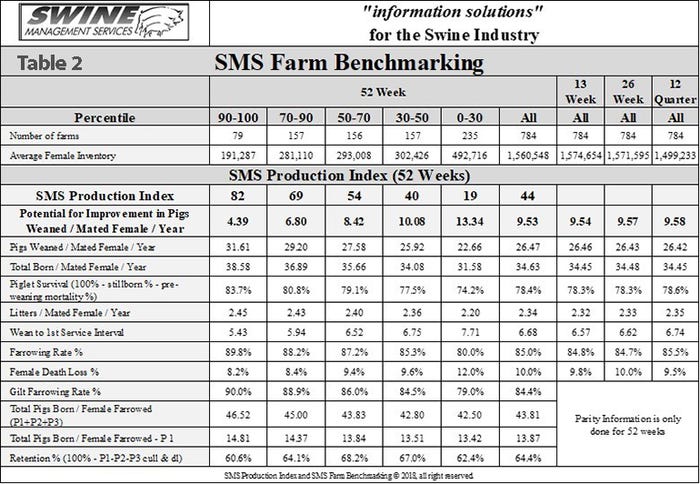
At SMS, our mission statement is to provide “Information solutions for the swine industry.” We feel with the creation of different SMS Benchmarking databases for all production areas we now have more-detailed information to share with the swine industry. If you have questions or comments about these columns, or if you have a specific performance measurement that you would like us to write about, contact Mark Rix, Ron Ketchem or Valerie Duttlinger.
We enjoy being a part of the National Hog Farmer NHF Daily team. Previous articles can be found at NationalHogFarmer.com.
Sources: Ron Ketchem, Mark Rix and Valerie Duttlinger, Swine Management Services LLC, who are solely responsible for the information provided, and wholly own the information. Informa Business Media and all its subsidiaries are not responsible for any of the content contained in this information asset.
About the Author(s)
You May Also Like



